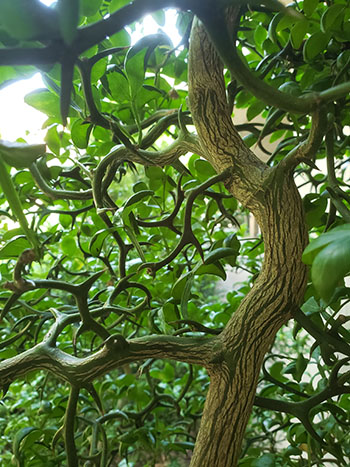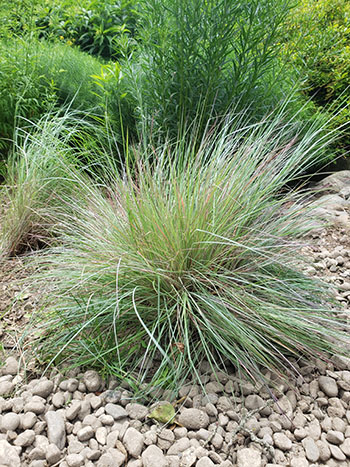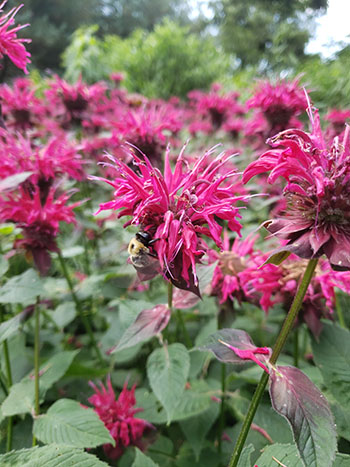
Plant of the Week: July 5
Guest Author: Hailey Dunbar

Poncirus trifoliata ‘Flying Dragon’ is a pleasure to witness in any garden and is an eccentric delight that seems to have appeared straight out of a fantasy book. True to its name, the graceful swooping of the magnificent convolutions and long piercing thorns impress images of a fantastic regal display of dragons in flight and the ferociousness of their teeth and claws when threatened. This small shrub, commonly known as the hardy orange, makes the perfect cold-hardy barrier plant due to its intense poky nature. In addition to the incredible display of thorns, this stunning botanical specimen produces lovely, fragrant, white citrus flowers that develop into small orange or yellow fruits. While the fruit is exceptionally bitter and not eaten directly, it can be made into candies, marmalade, or a nice citrusade! Experience this fierce display in the Winter Garden. Photo credit: H. Dunbar

Schizachyrium scoparium, the little bluestem, is a lovely mounding ornamental grass that adds a complementary pop of color to any landscape. The name comes from the bluish coloration of the lower portion of the grass, but during the fall it produces a stunning contrast of red coloration and fluffy white seed heads that small birds love to feast on. It self-seeds very well, is planted en masse with pleasing results, and is resistant to deer, so no munching problems here! It is native to prairies, open fields, or roadsides and it tolerates a wide array of soils, though it does best with full sun, good drainage, and is tolerant of drought once established. There is a lovely stand along the path in the BioStream. Photo credit: H. Dunbar

Monarda didyma ‘Raspberry Wine’, or bee balm, provides a tall, commanding, vibrant flower display in mid-summer that is highly attractive to bees, hummingbirds, and humans alike! The flower provides a pleasing aroma, the leaves smell minty, and are often used in herbal teas.The plant has been used medicinally to treat worms, gas, fever, and gastrointestinal issues. It was also used to create a balm to soothe bee stings, hence the common name bee balm. It can be colonized by rhizomes, is susceptible to powdery mildew, and will bloom midsummer to fall in the Northeast. There is a dramatic stand in the BioStream where pollinators can be found enjoying the bounty. Photo credit: H. Dunbar





Jan Semler
Posted at 08:36h, 15 JulyBecky–you got me with “intense pokey nature!” I love your plant descriptions! thanks.
Becky Robert
Posted at 09:18h, 15 JulyLOL. Thanks Jan. Our summer intern Hailey has great way with words.
Stay cool in the summer heat,
Becky
Jasmine Anderson
Posted at 13:59h, 16 JulyIt looks like it was Hailey that wrote this, not Becky or Julia (though I am sure they have some great posts as well!). Great post, and yes the plant descriptions are lovely.
Becky Robert
Posted at 10:59h, 23 JulyThank you for catching this error, Jasmine. I was working on a project with Julia and misspoke. This wonderful turn of phrase is all credit to Hailey.
Cheers,
Becky